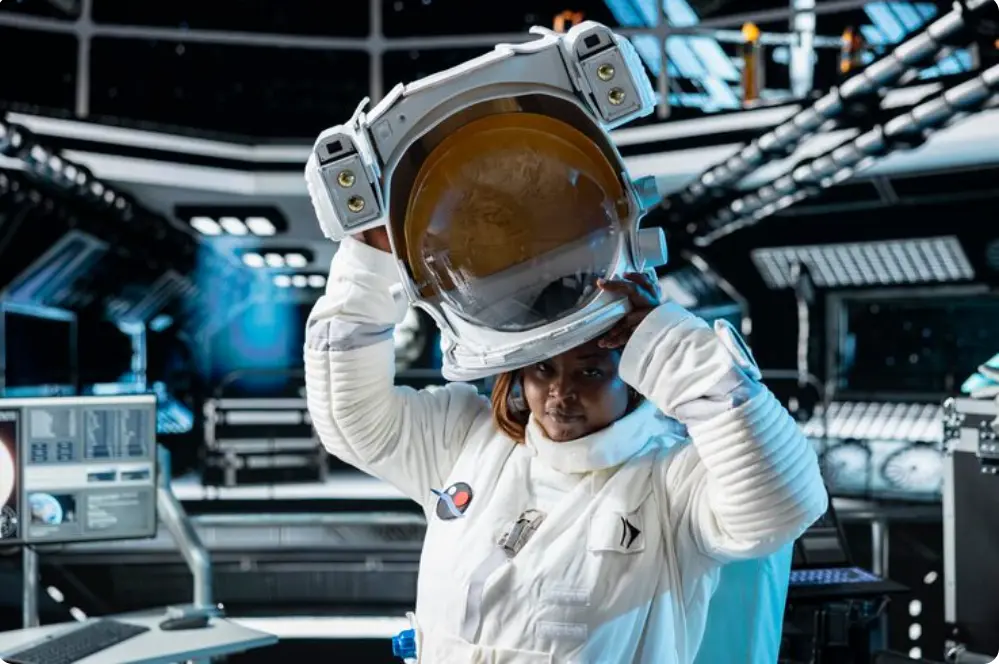1. What is NASA space exploration?
NASA space exploration refers to the scientific investigation and discovery of outer space using spacecraft, satellites, and human missions. NASA (National Aeronautics and Space Administration) leads the United States’ efforts in exploring planets, stars, and other celestial bodies to understand the universe better.
2. When was NASA established?
NASA was established on July 29, 1958, by the National Aeronautics and Space Act. It officially began operations on October 1, 1958, succeeding the earlier National Advisory Committee for Aeronautics (NACA).
3. What are NASA’s main goals in space exploration?
NASA’s main goals include:
- Expanding human knowledge of space and Earth.
- Developing technology for space travel.
- Conducting scientific research on planets, moons, asteroids, and comets.
- Preparing humans for long-duration space missions.
- Supporting international collaboration in space science.
4. What are some of NASA’s most famous space missions?
Some of NASA’s landmark missions include:
- Apollo Missions (1960s-70s): First humans on the Moon.
- Mars Rovers (Spirit, Opportunity, Curiosity, Perseverance): Exploration of Mars’ surface.
- Hubble Space Telescope: Revolutionary deep-space observations.
- Voyager Missions: Study of outer planets and interstellar space.
- Artemis Program: Aimed at returning humans to the Moon by the mid-2020s.
5. How does NASA send humans to space?
NASA sends humans to space using rockets such as the Space Launch System (SLS) and previously the Space Shuttle program. Astronauts board spacecraft designed for low Earth orbit missions or deep space exploration and are launched via powerful rockets from facilities like Kennedy Space Center.
6. What is the Artemis program?
The Artemis program is NASA’s latest lunar exploration initiative aiming to land the first woman and the next man on the Moon by the mid-2020s. The goal is to establish sustainable lunar exploration and prepare for future Mars missions.
7. Why is space exploration important?
Space exploration is crucial for:
- Advancing scientific knowledge.
- Developing new technologies.
- Understanding Earth’s climate and environment.
- Inspiring innovation and education.
- Preparing humanity for future habitation beyond Earth.
8. How does NASA explore Mars?
NASA explores Mars using robotic rovers, orbiters, and landers. These vehicles study the planet’s geology, climate, and potential for past or present life. The Perseverance rover, for example, collects samples and looks for biosignatures.
9. What challenges does NASA face in space exploration?
Key challenges include:
- The harsh environment of space (radiation, vacuum, microgravity).
- Technical and engineering difficulties.
- The high cost of missions.
- Long-duration effects on astronaut health.
- Communication delays over vast distances.
10. What technologies has NASA developed for space exploration?
NASA has developed numerous technologies, including:
- Advanced rocket propulsion systems.
- Space suits to protect astronauts.
- Life support systems.
- Autonomous rovers and probes.
- Satellite communications and navigation.
11. How does NASA collaborate with other countries?
NASA works with international space agencies such as ESA (European Space Agency), Roscosmos (Russia), JAXA (Japan), and others on joint missions, data sharing, and the International Space Station (ISS) program.
12. What is the International Space Station (ISS)?
The ISS is a habitable artificial satellite orbiting Earth, serving as a microgravity laboratory for scientific research and international cooperation in space. NASA is a major partner in its operation.
13. How does NASA contribute to Earth science?
NASA’s satellites monitor Earth’s atmosphere, oceans, and land, helping track climate change, weather patterns, and natural disasters, thus providing critical data for environmental science.
14. What are NASA’s plans for Mars exploration?
NASA plans to send humans to Mars in the 2030s, using robotic missions to scout landing sites, test technologies, and study the planet’s environment. The goal is to establish a human presence on Mars.
15. What is the significance of the Hubble Space Telescope?
Launched in 1990, the Hubble Space Telescope has transformed astronomy by capturing detailed images of distant galaxies, nebulae, and other cosmic phenomena, vastly expanding our understanding of the universe.
16. How does NASA train astronauts?
Astronaut training includes physical fitness, technical education, simulations of spacewalks, zero-gravity flights, and survival training to prepare for various mission scenarios.
17. What are some recent NASA discoveries?
Recent discoveries include evidence of water ice on the Moon and Mars, organic molecules on Mars, exoplanets in habitable zones, and insights into the Sun’s activity through missions like Parker Solar Probe.
18. How can the public get involved with NASA?
The public can engage by following NASA missions, participating in educational programs, attending events, and even applying to become astronauts or scientists.
19. What is NASA’s budget?
NASA’s budget varies annually but is typically around $20-25 billion, funding research, technology development, and missions.
20. How has NASA impacted everyday life?
NASA’s technology has contributed to many everyday products such as GPS, weather forecasting, medical imaging, water purification, and even improved materials used in sports and consumer products.
21. What is space tourism and is NASA involved?
Space tourism involves private individuals traveling to space. NASA is not a commercial spaceflight company but collaborates with private companies like SpaceX and Blue Origin that are developing space tourism capabilities.
22. What future missions are planned by NASA?
Upcoming missions include:
- Artemis lunar landings.
- Mars Sample Return mission.
- James Webb Space Telescope observations.
- Exploration of asteroids and outer planets.
23. How does NASA ensure astronaut safety?
NASA uses rigorous testing, advanced spacecraft design, emergency protocols, and continuous health monitoring to ensure astronauts’ safety during missions.
24. What is the significance of studying space radiation?
Understanding space radiation is vital because it poses health risks to astronauts on long missions. NASA researches protective measures to minimize exposure.
25. How does NASA support STEM education?
NASA supports STEM (Science, Technology, Engineering, Math) through educational resources, internships, competitions, and outreach programs to inspire future generations of scientists and engineers.
26. How has NASA’s space exploration evolved over the years?
NASA started with human spaceflight and lunar missions, moved to robotic planetary exploration and space telescopes, and is now focusing on sustainable human presence on the Moon and Mars.
27. What role does robotics play in NASA’s missions?
Robotics are essential for exploring planets where humans cannot safely go yet. Rovers, landers, and probes gather valuable data remotely.
28. Can NASA’s technology be used for environmental protection?
Yes, NASA’s Earth observation satellites provide data that helps monitor pollution, deforestation, and natural disasters, contributing to global environmental protection efforts.
29. How does NASA’s Mars Perseverance rover search for signs of life?
Perseverance collects rock and soil samples, analyzes chemical compositions, and looks for biosignatures indicating past microbial life.
30. What are some fun facts about NASA?
- NASA’s Apollo 11 mission was watched by millions worldwide.
- The first American astronaut in space was Alan Shepard.
- NASA invented memory foam.
- The Mars rover Opportunity lasted 15 years, far beyond its original 90-day mission.
FAQs About NASA Space Exploration
1. What is NASA?
NASA stands for the National Aeronautics and Space Administration. It is the United States government agency responsible for civilian space exploration, aeronautics research, and scientific discovery related to space and the universe.
2. What does NASA space exploration involve?
NASA space exploration includes sending robotic and human missions into space to explore planets, stars, moons, and galaxies. It also includes developing new technologies, studying Earth from space, and searching for signs of life beyond our planet.
3. Why is space exploration important?
Space exploration helps us understand the universe, improve life on Earth through advanced technologies, prepare for future human settlement on other planets, and inspire innovation in science and engineering.
4. What was NASA’s first major achievement?
One of NASA’s earliest and most significant achievements was the Apollo 11 mission in 1969, which landed the first humans on the Moon — Neil Armstrong and Buzz Aldrin.
5. What is the Artemis program?
The Artemis program is NASA’s current mission to return humans to the Moon. The goal is to land the first woman and the next man on the lunar surface, build a sustainable presence there, and use it as a stepping stone for Mars exploration.
6. How does NASA explore Mars?
NASA explores Mars using orbiters, landers, and rovers like Perseverance and Curiosity. These robotic missions collect data, images, and samples to study Mars’ climate, geology, and the possibility of past life.
7. Will NASA send humans to Mars?
Yes, NASA plans to send astronauts to Mars by the late 2030s. Ongoing missions help prepare for this goal by testing technology and studying how to support human life on the Red Planet.
8. What is the International Space Station (ISS)?
The ISS is a large space laboratory that orbits Earth. It is used by NASA and other space agencies to conduct scientific research, test new technology, and prepare for future deep space missions.
9. How does space exploration benefit us on Earth?
Many technologies developed for space exploration are now used on Earth, such as:
- GPS navigation
- Weather forecasting
- Satellite communication
- Medical imaging
- Water purification systems
10. What are NASA’s most famous space missions?

Some of NASA’s most iconic missions include:
- Apollo Moon missions
- Voyager 1 and 2
- Hubble Space Telescope
- Mars Rovers (Spirit, Opportunity, Curiosity, Perseverance)
- James Webb Space Telescope
- Artemis Program
Conclusion
NASA space exploration continues to push the boundaries of human knowledge and technology. From landing humans on the Moon to sending rovers to Mars, NASA inspires generations to look beyond Earth and explore the wonders of the cosmos. With ongoing missions and ambitious plans, NASA’s journey to understand space is far from over, promising exciting discoveries ahead.
